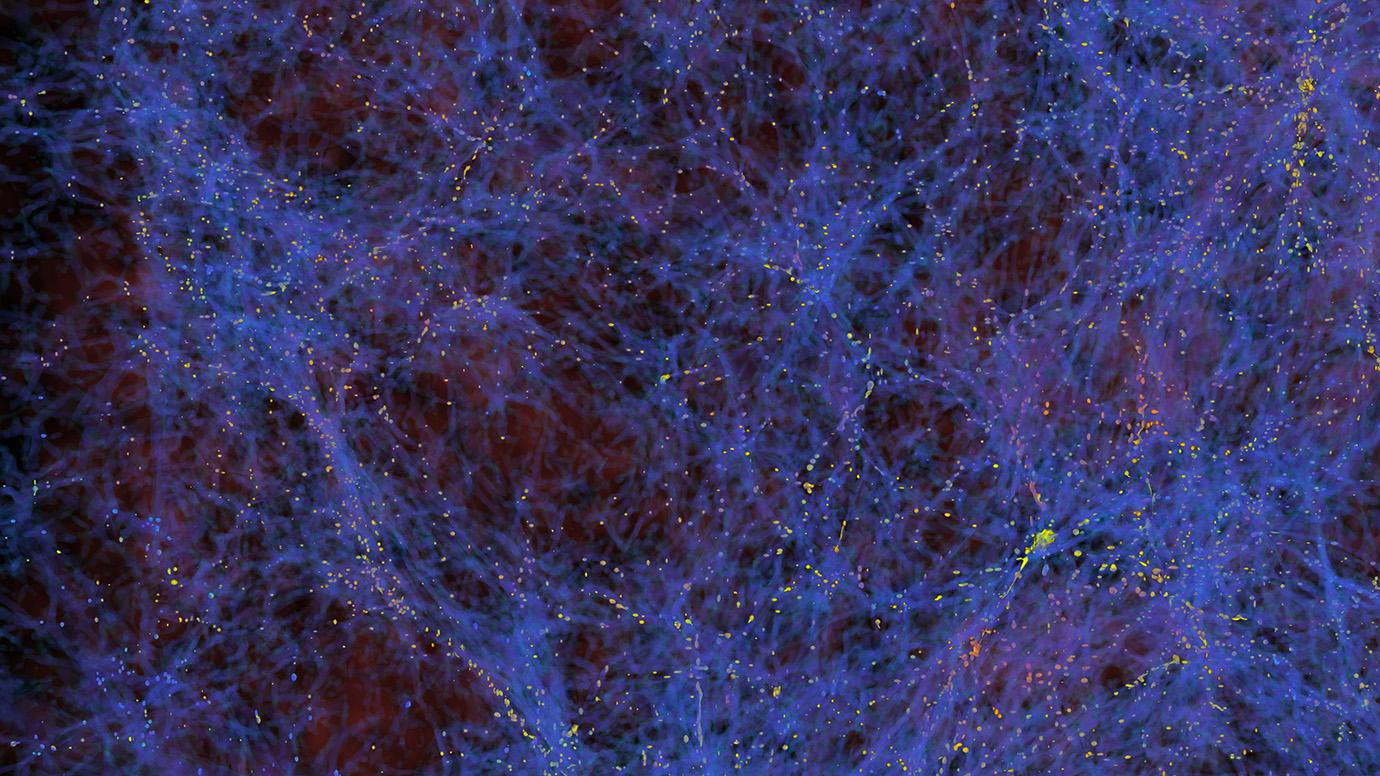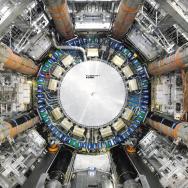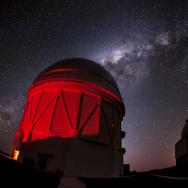Higgs boson could be tied with dark particle, serve as ‘portal to the dark world’
Now that they’ve identified the Higgs boson, scientists at the Large Hadron Collider have set their sights on an even more elusive target.
All around us is dark matter and dark energy—the invisible stuff that binds the galaxy together, but which no one has been able to directly detect. “We know for sure there’s a dark world, and there’s more energy in it than there is in ours,” said LianTao Wang, a University of Chicago professor of physics who studies how to find signals in large particle accelerators like the LHC.
Wang, along with scientists from the University and UChicago-affiliated Fermilab, think they may be able to lead us to its tracks; in a paper published April 3 in Physical Review Letters, they laid out an innovative method for stalking dark matter in the LHC by exploiting a potential particle’s slightly slower speed.
While the dark world makes up more than 95% of the universe, scientists only know it exists from its effects—like a poltergeist you can only see when it pushes something off a shelf. For example, we know there’s dark matter because we can see gravity acting on it—it helps keep our galaxies from flying apart.
Theorists think there’s one particular kind of dark particle that only occasionally interacts with normal matter. It would be heavier and longer-lived than other known particles, with a lifetime up to one tenth of a second. A few times in a decade, researchers believe, this particle can get caught up in the collisions of protons that the LHC is constantly creating and measuring.
“One particularly interesting possibility is that these long-lived dark particles are coupled to the Higgs boson in some fashion—that the Higgs is actually a portal to the dark world,” said Wang, referring to the last holdout particle in physicists’ grand theory of how the universe works, discovered at the LHC in 2012. “It’s possible that the Higgs could actually decay into these long-lived particles.”
The only problem is sorting out these events from the rest; there are more than a billion collisions per second in the 27-kilometer LHC, and each one of these sends subatomic chaff spraying in all directions.
“One particularly interesting possibility is that...the Higgs is actually a portal to the dark world.”
Wang, UChicago postdoctoral fellow Jia Liu and Fermilab scientist Zhen Liu (now at the University of Maryland) proposed a new way to search by exploiting one particular aspect of such a dark particle. “If it’s that heavy, it costs energy to produce, so its momentum would not be large—it would move more slowly than the speed of light,” said Liu, the first author on the study.
That time delay would set it apart from all the rest of the normal particles. Scientists would only need to tweak the system to look for particles that are produced and then decay a bit more slowly than everything else.
The difference is on the order of a nanosecond—a billionth of a second—or smaller. But the LHC already has detectors sophisticated enough to catch this difference; a recent study using data collected from the last run and found the method should work, plus the detectors will get even more sensitive as part of the upgrade that is currently underway.
“We anticipate this method will increase our sensitivity to long-lived dark particles by more than an order of magnitude—while using capabilities we already have at the LHC,” Liu said.
Experimentalists are already working to build the trap: When the LHC turns back on in 2021, after boosting its luminosity by tenfold, all three of the major detectors will be implementing the new system, the scientists said. “We think it has great potential for discovery,” Liu said.
“If the particle is there, we just have to find a way to dig it out,” Wang said. “Usually, the key is finding the question to ask.”
Citation: “Enhancing Long-Lived Particles Searches at the LHC with Precision Timing Information.” Liu et al, Physical Review Letters, April 3, 2019. https://doi.org/10.1103/PhysRevLett.122.131801.
Funding: U.S. Department of Energy, Oehme Fellowship












